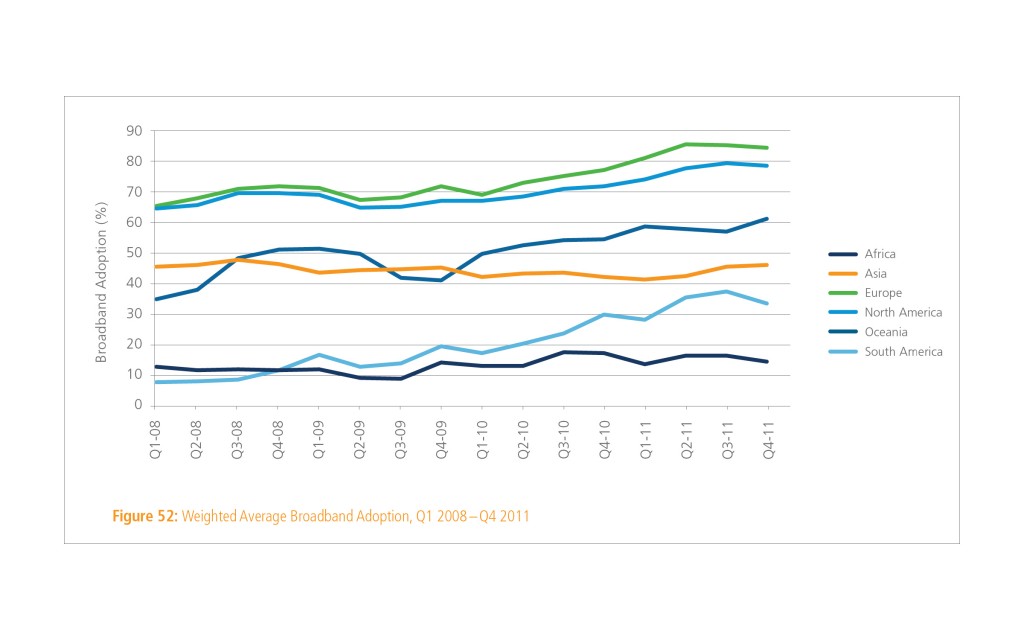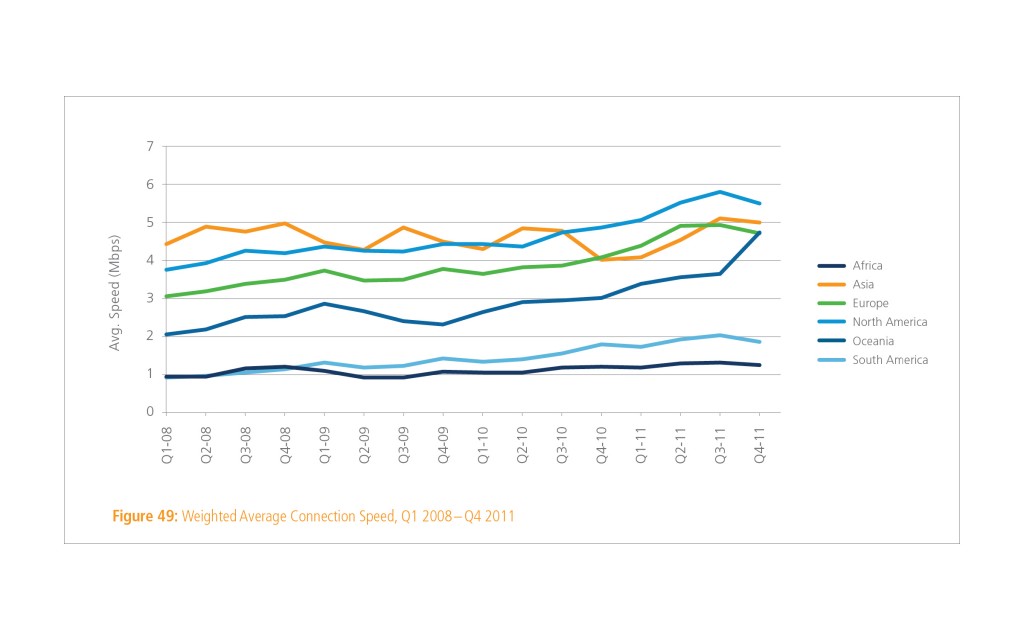Quick facts from Akamai’s ‘The State of the Internet, Q4 2011’ Report
Akamai Technologies, Inc., a leading cloud platform, recently released its Fourth Quarter, 2011 State of the Internet report. Based on data gathered from the Akamai Intelligent Platform, the report provides insight into key global statistics such as Internet penetration, mobile traffic and data consumption, origins of attack traffic, IPv6 adoption and global and regional connection speeds. Much of the information in the report is at a global level or focuses on nations with the most robust Internet speeds. However, a variety of data points exist for the Africa region.

Figure 52: Weighted Average Broadband Adoption, Q1 2008 – Q4 2011. As a continent, Africa still greatly trails the rest of the world. Growth has been slow but is picking up as international capacity and mobile broadband increase. Click to enlarge. {Akamai}
- Libya remained the country with the highest level of connections in the sub-256kbs speed range, ending 2011 with a 52% narrowband adoption rate. (5)
- 2% of global attack traffic came from Africa. (6)
- The IPv4 “available pool” for AFRINIC will last until October 2014. (9)
- The global average connection speed saw an unusual, and fairly significant, decline in the fourth quarter of 2011, dropping to 2.3 Mbps. (12)
- Randburg, South Africa was found to be the fastest city in Africa with an average connection speed of 1.7 Mbps. (13)
- Guinea-Bissau’s average peak connection speed vaulted past 2 Mbps in the fourth quarter, with 22% quarterly growth and 44% yearly growth, but it remained the lowest among countries/regions that qualified for consideration. (15)
- Casablanca, Morocco had the fastest city-level peak speed with an average peak connection speed of 8.8 Mbps. (16)
- Tunisia’s Internet penetration rate was down 93% to 5.9% adoption. (19)
- The weighted average connection speed also grew in Africa, though the increase over time was fairly nominal. (48)
- Africa posted a nominal gain in average broadband speed, growing nearly 30% — while not as significant as the other regions, it is still a sign that higher-speed Internet connections are becoming more available. (50)
- Africa saw narrowband adoption rates drop 73% over the last four years. (51)

Figure 49: Weighted Average Connection Speed, Q1 2008 – Q4 2011. Akamai finds little advancement in African speeds since 2008. Click to enlarge. {Akamai}
In 2010, the report had Africa’s broadband penetration at 11% with a speed of 944 kbps. In 2011, the report suggested a slowdown of South Africa’s mobile broadband speeds.












 Twitter
Twitter Facebook
Facebook Pinterest
Pinterest